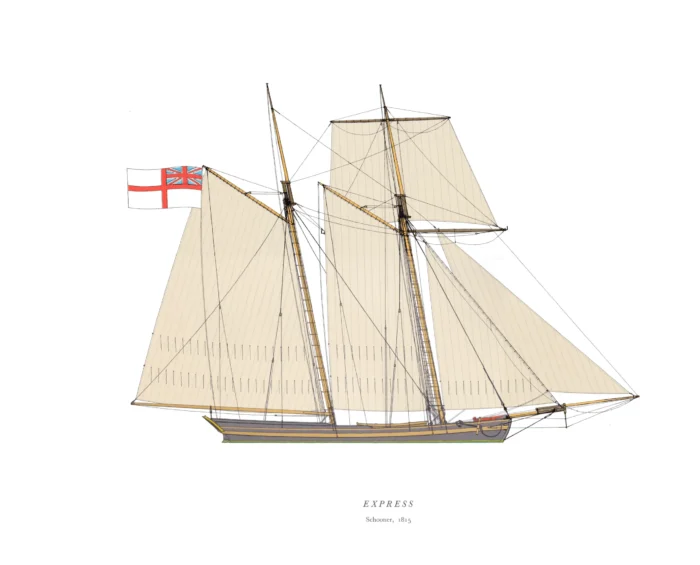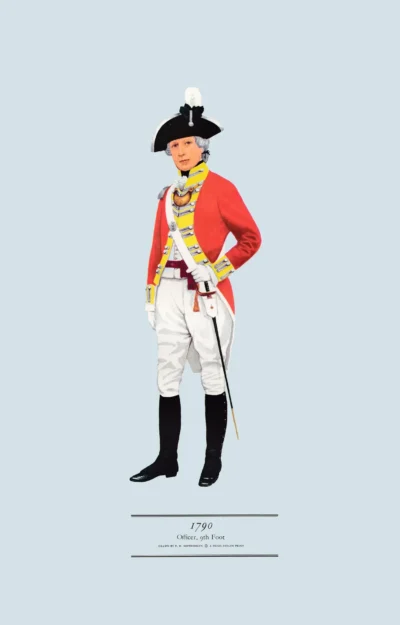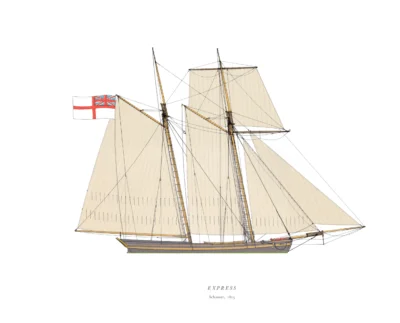HMS Express, Schooner, 1815
£25.00
Express: Schooner; US merchant ship Achilles renamed Anna Maria captured by Royal Navy 1813 and renamed Express (scroll down for a more detailed Description)
Published 1968 by © Hugh Evelyn Limited; drawn by Scottish marine artist John Gardner (1930-2010)
Size: c. 44 x 35 cm [17″ x 14″] (may vary slightly from printers’ cut 50 years ago)
Printed on high white matt cardstock 144 g/sm2.
Print is LARGE size – shipping is the same for 1 to 10 prints (based on largest print size in your order) – see Shipping & Returns.
In stock
Description
Schooner rig
Built: New York, NY as Achilles
Launched: 1809; Renamed: Anna Maria 1813; Captured : 1813;
92 Tons; Length: 64′ 6″ (19.7 m); Beam: 18′ (5.5 m); Hold Depth: 7′ 1″ (2.2 m);
Armament: 4 x 12-lb (5.4 kg) carronades
By the end of the 19th century a very distinctive type of sailing ship had evolved on the Atlantic seaboard of the United States. These fast and handy craft had hulls with refined lines and a highly developed schooner rig. Many of these vessels were captured during the War of 1812 and the Royal Navy were quick to recognise their virtues as fleet tenders and fast despatch vessels. Soon their long hulls and rigs were being copied in British yards. Built at New York in 1809 as Achilles she was renamed Anna Maria. On 27 November 1813 HMS Plantagenet captured the “Sloop Anna Maria, of 7 men and 60 tons, from Philadelphia, bound to New York”. This is the most likely account of the vessel’s capture from among the several Anna Marias whose capture was announced in the London Gazette. She served the Royal Navy in North American waters as an advice boat. In 1815 the Royal Navy commissioned her as HMS Express, a ship’s tender, and after coppering her she served in the Mediterranean. In 1816 she was at Algiers with Lord Exmouth’s fleet for a 5-hour bombardment to discourage pirates and corsairs from operating from out of there. She was sold at Malta on 26th July 1827.
Additional information
| Weight | 0.0223 kg |
|---|---|
| Dimensions | 44 × 35.5 cm |





